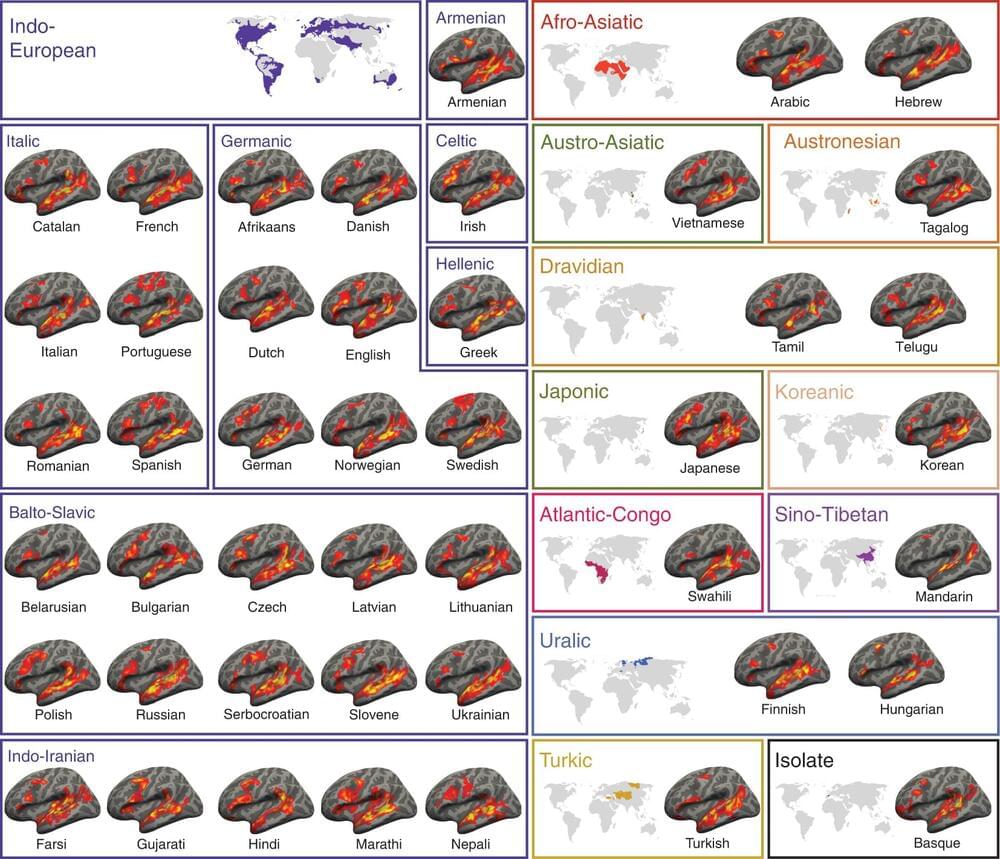To understand the architecture of human language, it is critical to examine diverse languages; however, most cognitive neuroscience research has focused on only a handful of primarily Indo-European languages. Here we report an investigation of the fronto-temporo-parietal language network across 45 languages and establish the robustness to cross-linguistic variation of its topography and key functional properties, including left-lateralization, strong functional integration among its brain regions and functional selectivity for language processing. fMRI reveals similar topography, selectivity and inter-connectedness of language brain areas across 45 languages. These properties may allow the language system to handle the shared features of languages, shaped by biological and cultural evolution.
